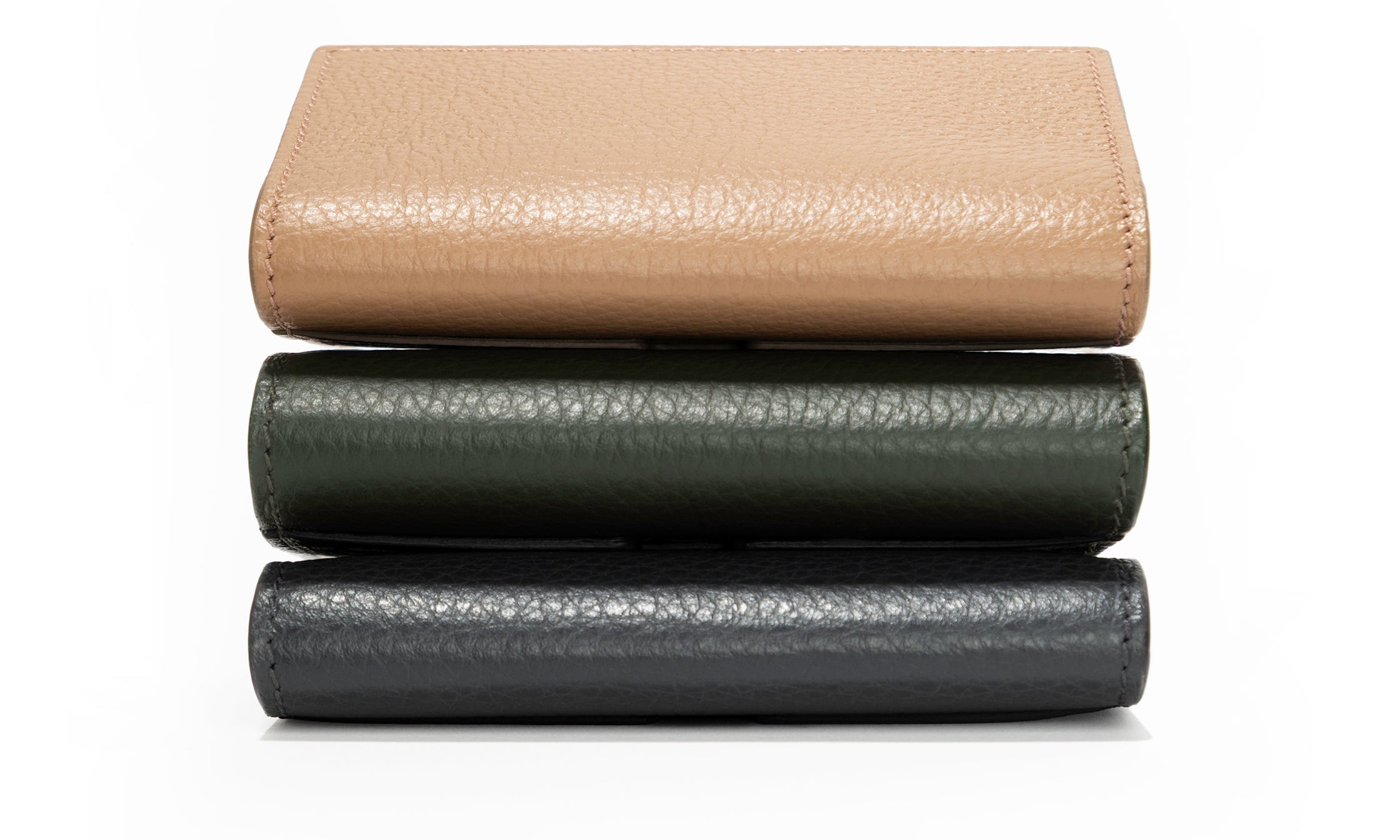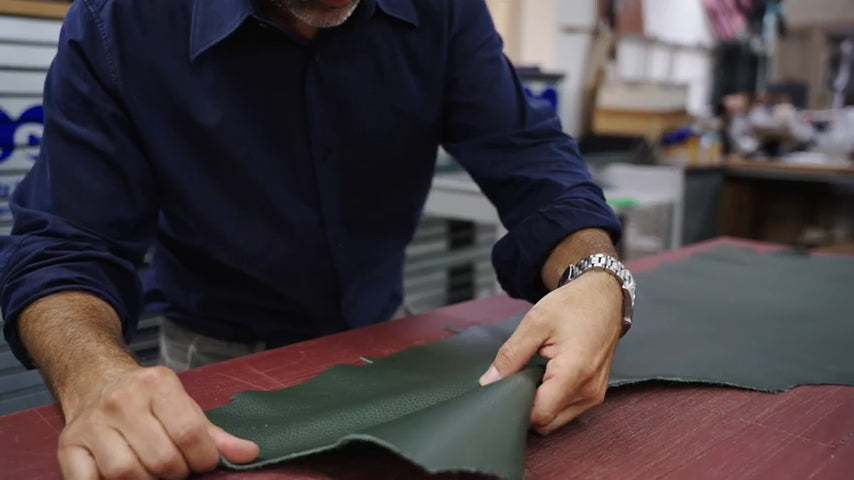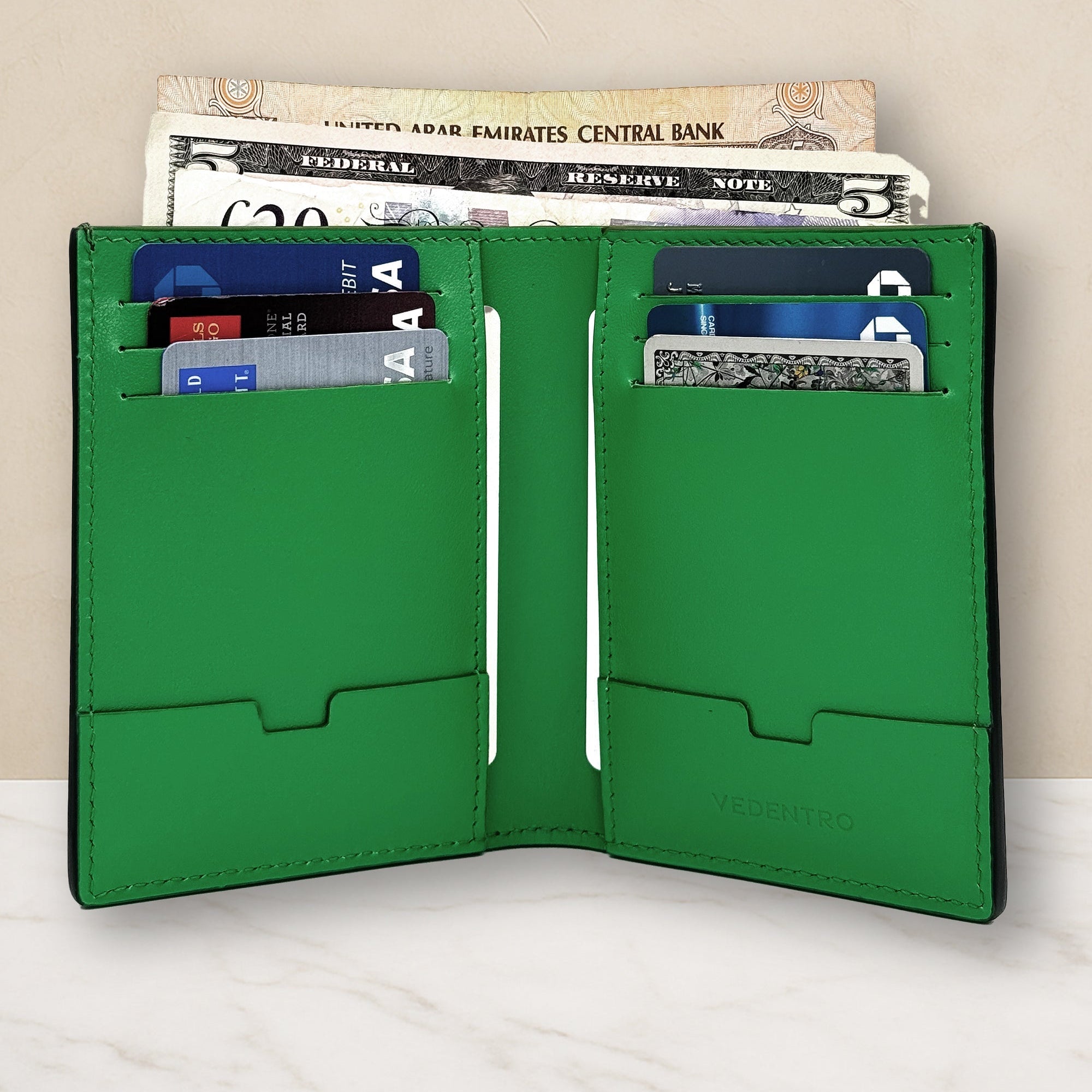How to Identify Authentic Full Grain Leather


How to Identify Authentic Full Grain Leather: A Complete Guide to Recognizing Genuine Quality
Authentic full grain leather stands apart as the most durable, breathable, and character-rich material available, yet many shoppers struggle to discern genuine hides from lower grades. In this guide, you will learn how to identify full grain leather by sight and touch, understand its natural grain and patina development, compare it to other leather types, and care for your prized accessories. We will explore visual cues, sensory tests, grade comparisons, investment value, maintenance best practices, and common myths—empowering you to confidently choose and preserve full grain leather pieces, including our signature collection at Vedentro.com.
What Is Full Grain Leather and Why Is It Considered the Highest Quality?
Full grain leather originates from the topmost layer of the hide, retaining every pore, scar, and fiber bundle, which delivers unmatched durability, breathability, and luxurious aging characteristics. This minimal-processing material preserves the hide’s natural grain and tensile strength, allowing it to develop a rich patina that tells a unique story over time.
What Defines Full Grain Leather Compared to Other Leather Types?
Full grain leather is defined by its unaltered surface and intact fiber structure, whereas other grades undergo mechanical sanding, buffing, or lamination that remove or mask imperfections. By avoiding corrective treatments, full grain leather maintains maximum tensile strength (20–30 MPa) and retains breathability, ensuring long-term performance.
The Science of Leather Grades
Full grain leather is prized for its natural characteristics, including the retention of the hide's original fiber structure and the development of a unique patina over time. This contrasts with other leather grades that undergo processes like sanding or splitting, which can compromise the material's integrity and aesthetic qualities.
Leather Industries of America, Leather Facts (2024)
This supports the article's explanation of how full grain leather is superior to other grades due to its natural properties.
How Does the Natural Grain and Minimal Processing Affect Full Grain Leather?
The natural grain layer serves as a barrier against moisture and wear, and minimal processing means the hide’s original collagen matrix remains intact. This structural integrity promotes:
- Breathability – Grain pores regulate moisture and temperature.
- Strength – Uncut fibers yield high tear resistance.
- Patina Potential – Surface oils and light scratches darken into a distinctive sheen.
Together, these factors enhance full grain leather’s longevity and comfort in everyday accessories.
What Are the Key Properties of Full Grain Leather?
A closer look at full grain leather reveals specific attributes that signal its superior quality:
| Entity | Attribute | Value |
|---|---|---|
| Full Grain Leather | Grain Integrity | Unaltered top layer preserving natural pores and scars |
| Full Grain Leather | Tensile Strength | 20–30 MPa, enabling resistance to ripping and stretching |
| Full Grain Leather | Breathability | High moisture vapor transmission for comfort in wear |
| Full Grain Leather | Patina Formation | Progressive darkening and sheen that enhances character |
These core properties distinguish full grain leather as the premium choice for discerning customers.
How Can You Visually Identify Authentic Full Grain Leather?
Full grain leather reveals its authenticity through visible imperfections, a unique grain pattern, and evolving patina. By examining these visual cues closely, you can confirm genuine quality before purchase.
What Are Natural Imperfections and How Do They Indicate Authenticity?
Natural imperfections are small scars, insect bites, and wrinkle lines that occurred during the animal’s life. These marks indicate that the hide’s surface has not been sanded or corrected, and they contribute to full grain leather’s one-of-a-kind appearance and strength.
How Does the Unique Grain Pattern Differentiate Full Grain Leather?
Each hide displays a distinct grain pattern formed by the animal’s musculature and skin texture. Unlike embossed or buffed surfaces, full grain leather’s pattern varies in depth and pore size, creating a tactile fingerprint that no two pieces share.
What Is Patina and How Does It Develop Over Time on Full Grain Leather?
Patina is the natural darkening and sheen that develop when oils, sunlight, and handling interact with aniline-dyed full grain leather. This aging process enriches color and highlights texture, revealing the material’s story.
Why Is Patina a Mark of Quality and Character?
Patina demonstrates full grain leather’s ability to age gracefully rather than deteriorate. As the surface oxidizes and absorbs natural oils, it grows more supple and visually striking, signaling authentic craftsmanship and durable material.
What Sensory Tests Help Confirm Full Grain Leather Authenticity?
Sensory assessments involving feel, smell, weight, and thickness offer reliable verification of full grain leather’s genuineness. These simple tests replicate professional quality checks without specialized tools.
How to Assess the Feel: What Does Supple Yet Firm Leather Indicate?
Genuine full grain leather feels springy and resilient, yielding slightly under pressure but quickly returning to its original shape. This combination of suppleness and firmness reflects an intact fiber network that balances comfort with structural strength.
How to Perform the Smell Test for Genuine Full Grain Leather?
Authentic full grain leather emits a warm, earthy aroma derived from the hide’s natural oils and tanning agents. A deep, rich scent distinguishes real leather from synthetic or corrected-grain variants that often smell of chemicals or plastic.
How Does Weight and Thickness Help Identify Full Grain Leather?
Heavier weight and consistent thickness across the surface signal full grain leather’s dense fiber composition. Typical full grain hides measure 1.0–1.4 mm in thickness, and their substantial heft conveys the material’s durability.
How Does Full Grain Leather Compare to Other Leather Grades?
Full grain leather outperforms top grain, genuine, and bonded leathers in appearance, durability, and aging potential. Understanding these distinctions ensures you select the highest quality for lasting value.
What Are the Differences Between Full Grain and Top Grain Leather?
Top grain leather is mechanically sanded to remove surface blemishes, yielding a uniform look but sacrificing some strength and patina potential. In contrast, full grain leather retains every natural mark and ages into a rich, character-filled patina.
Why Is Genuine Leather Considered Inferior to Full Grain Leather?
Genuine leather is a catch-all term for split hides and scrap layers glued together and coated with pigments. It lacks the natural grain and robust fiber structure of full grain, resulting in reduced longevity and superficial finish.
What Are Bonded and Corrected Grain Leathers and How Do They Differ?
Bonded leather assembles leather scraps with adhesives and plastic coatings, while corrected grain leather sands and dyes the surface to mask flaws. Both methods compromise breathability and tensile strength.
How Do Sanding and Buffing Affect Leather Quality and Appearance?
Sanding and buffing remove the top grain, resulting in a consistent but artificial texture that cannot develop patina and is more prone to cracking. This processing step simplifies appearance at the expense of durability and natural beauty.

Why Is Investing in Full Grain Leather Products Worthwhile?
Full grain leather offers unmatched longevity, evolving beauty, and sustainable value that justify a higher initial investment. Quality hides outperform lower grades in every aspect of wear and aging.
How Does Full Grain Leather Offer Unmatched Durability and Longevity?
Durability and Longevity of Full Grain Leather
The intact fiber network of full grain leather contributes significantly to its durability and longevity, allowing it to withstand daily wear and tear. This inherent strength, combined with proper care, enables full grain leather products to last for many years, offering a high return on investment.
The American Leather Chemists Association, Leather and Hide Science (2023)
This citation reinforces the article's claims about the durability and long-term value of full grain leather products.
What Role Does Patina Play in Enhancing Product Value Over Time?
Each scratch, stain, and hand-rubbed polish contributes to a personalized patina that elevates an accessory’s aesthetic and emotional value. This evolving surface tells a story, making products more distinctive and treasured.
How Is Full Grain Leather a Sustainable and Ethical Choice?
Full grain leather utilizes the entire top layer of the hide, reducing waste and minimizing chemical processing. When sourced from responsible tanneries, it aligns with sustainable practices and ensures traceability throughout production.
How Should You Care for and Maintain Full Grain Leather Products?
Consistent cleaning, conditioning, and protection preserve full grain leather’s structural integrity and patina potential, allowing your pieces to perform beautifully for years.
What Are the Best Cleaning and Conditioning Practices for Full Grain Leather?
To clean, gently wipe the surface with a damp, lint-free cloth to remove dust and spills. Conditioning with a neutral, pH-balanced leather cream restores oils and maintains suppleness. Regular conditioning every 6–12 months prevents drying and cracking.
How Can You Protect Full Grain Leather from Water and Environmental Damage?
Apply a breathable, water-repellent spray to shield against moisture while preserving breathability. Store leather goods in a cool, dry place away from direct sunlight and heat sources to avoid fading and warping.
When and How Often Should You Condition Full Grain Leather Goods?
Condition full grain leather every 3–6 months in dry climates and 6–12 months in humid regions. Use a pea-sized amount of conditioner, gently massaging it into the hide in circular motions, then buffing off any excess.
What Are Common Myths and Misconceptions About Full Grain Leather?
Misunderstandings about imperfections, scratches, and synthetic look-alikes often mislead shoppers. Dispelling these myths helps you appreciate true full grain quality.
Are Natural Imperfections Flaws or Signs of Authenticity?
Natural imperfections are hallmarks of genuine full grain leather, indicating an unaltered grain structure rather than defects. Embracing these markings celebrates each hide’s individuality.
Does Full Grain Leather Scratch Easily Compared to Other Leathers?
While full grain leather can show surface marks, its deep fiber network resists tearing and, over time, integrates light scratches into the developing patina. Corrected and bonded leathers are more prone to irreversible surface damage.
How Can You Distinguish Real Full Grain Leather from Fake or Synthetic Alternatives?
Real full grain leather displays a warm, earthy aroma, inconsistent grain pattern, and evolving patina. Synthetic leathers emit chemical odors, exhibit uniform texture, and remain unchanged with age.
Authenticating full grain leather requires careful visual and sensory inspection, combined with an understanding of leather grades and aging processes. By mastering these identification methods, you can invest confidently in enduring accessories. Explore our curated selection of full grain leather wallets and learn how to care for your leather goods to enjoy lasting quality and style.
Vedentro.com crafts each item from premium full grain leather sourced from ethical tanneries, ensuring every scar and pore contributes to a truly unique patina. Choose authentic full grain leather for accessories that combine timeless beauty, sustainable value, and unwavering durability. Discover our commitment to craftsmanship and explore the difference today.




Comments